From Gavin Jantjes in London to The Blak Infinite in Melbourne, our editors on what they’re looking forward to this month
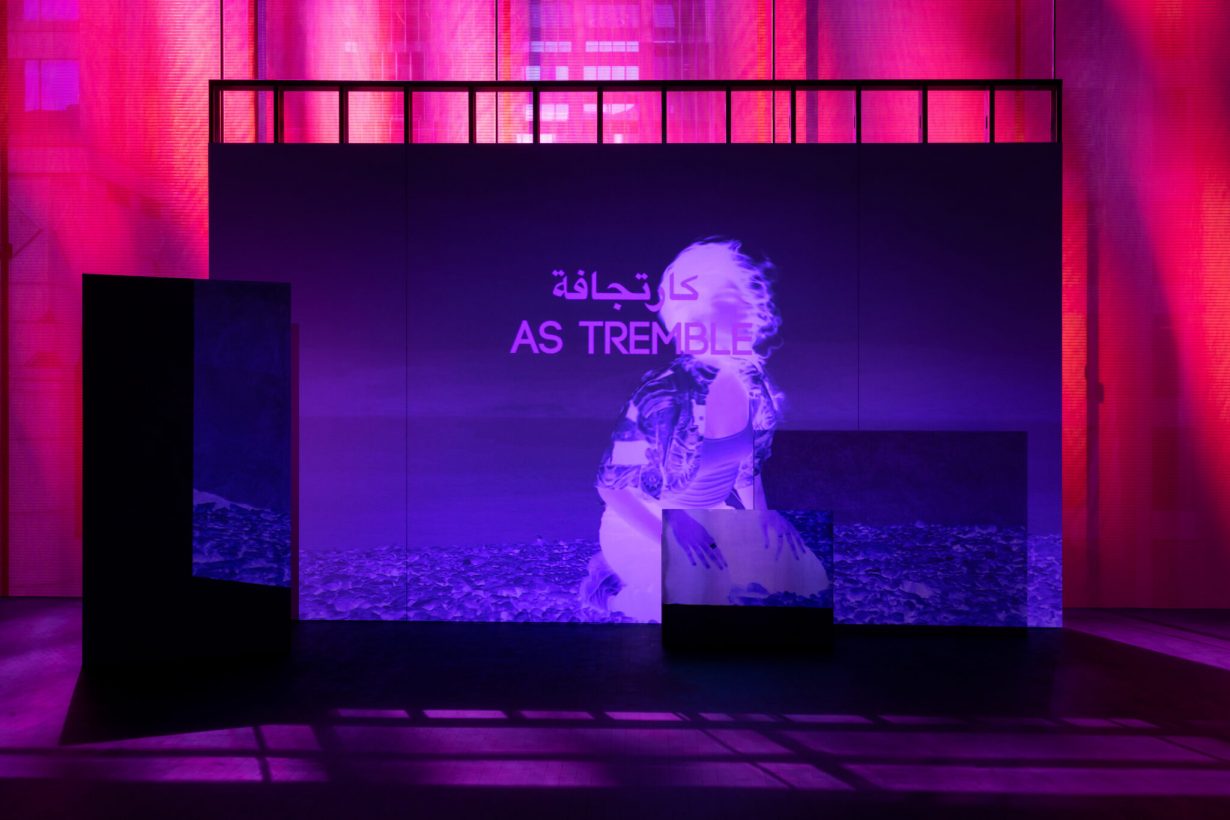
Basel Abbas & Ruanne Abou-Rahme: The song is the call and the land is calling
Copenhagen Contemporary and the Glyptotek, Copenhagen, 13 June–20 October
Wisps of breathing are barely audible between the crunching of footsteps over terrain – perhaps soil or gravel. These rhythmic steps slow and eventually give way to melancholic singing as research material and moving images of dried thistles are projected onto scattered screens in variable sizes. This is Basel Abbas and Ruanne Abou-Rahme’s Where the soil has been disturbed (2022-23), a multi-channel installation that uses the thistle as a metaphor for reliance and growth, that will be included in the duo’s dual-venue solo exhibition The song is the call and the land is calling. The Palestinian artists’ practice has long engaged with belonging, self determination, loss, violence and displacement to offer further insight into the Palestinian struggle. Where the soil has been disturbed will be shown at Copenhagen Contemporary, along with two other works, in a site-specific iteration. At the Glyptotek, Abbas and Abou-Rahme will present And yet my mask is powerful Part 1, 2, 3 (2016–18), a video-installation work about neolithic masks from the West Bank in private collections that have been digitally repatriated through ‘hacking’, along with a new work that engages with the museum’s collection. It is through these gestures of resilience and assertion of belonging that astutely and importantly make the case for liberation. Marv Recinto
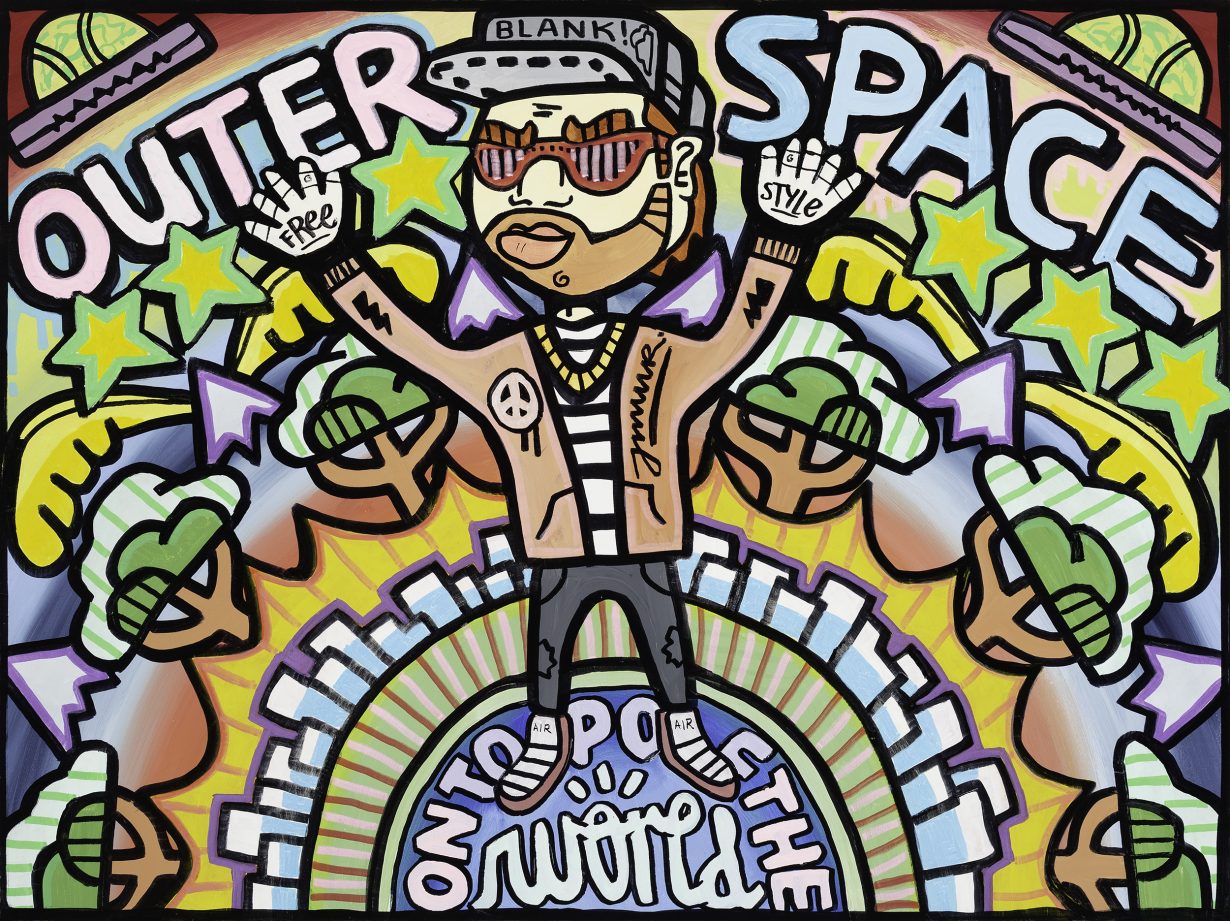
Rising: The Blak Infinite
Federation Square, Melbourne, through 16 June
Shadow Spirit, a brooding exhibition, curated by Kimberley Moulton, of work by 30 First People artists that reflected on the cosmologies that inform Ancestral knowledge, was the highlight of last year’s RISING:, an annual art, music and performance festival that takes place over two weeks across venues in Melbourne. For this year’s edition (its fourth), Moulton has curated another group show, The Blak Infinite, which is premised on ‘sharing First Peoples connections to the cosmos, political constellations and futures’. What might that look like? Tarryn Love’s ngaka – look here will be on view: a site-specific nighttime projection that takes visitors on a visual journey into Sky Country (the stories and histories of Australia’s First Nations peoples connected via the cosmos). Richard Bell brings his version of the Aboriginal Tent Embassy, a permanent protest occupation site established in front of Canberra’s Parliament House in 1972, by Michael Anderson, Billie Craigie, Bert Williams and Tony Coorey, from where activists could rally against the government’s oppressive policies on First Nations peoples. Here, Bell’s EMBASSY (2013–) takes the form of a large tent and will function as a space for reflection via a programme of screenings and artist talks that will take place each evening. Photographer Michael Cook will present images of fantasy worlds in which the historic roles of the invader and the invaded are reversed, and a series of sculptures titled BEAM ME UP The Art of Abduction, by multidisciplinary artist Tony Albert, who’s known for making work that addresses historic racial misrepresentation, will look to ‘themes of alienation, belonging, and place’. These artworks, alongside others that will be installed across Melbourne’s Fed Square, aim to highlight alternate ways of understanding humanity’s position within the wider universe. Shadow Spirit leaves The Blak Infinite with big footsteps in which to follow – but who knows, they might just lead out of this world. Fi Churchman

Gavin Jantjes: To Be Free! A Retrospective (1970-2023)
Whitechapel Gallery, London, 12 June–1 September
This upcoming retrospective of the South African artist Gavin Jantjes is his largest UK solo to date, tracking 50 years of printmaking, painting, writing and organising addressing the visual and narratological representation of South Africa and its diasporic communities. There’s the speculative side to his practice: in the acrylic painting Untitled (1989), against a pillowy blue and star-speckled sky, a umbilical-like white line runs out from the mouth of an African mask, drawing across the frame, enveloping a recreation of Picasso’s Les Demoiselles d’Avignon (1907), then returning to the nose of the mask, completing a double loop like an infinity symbol; Jantjes suggests both commonality between the mask and the great painter, but also claims ownership, or that of influence, for one culture before another. There’s also the journalistic: A South African Colouring Book (1974–5), which gathers newspaper cuttings, photographs and drawings to address apartheid in its atrocities (like the Sharpeville Massacre) and also its insidious affects on quotidian life; ten of the 12-work series are overlain with technicolour printer-test blocks, simultanously presenting Jantjes’s work as a kind of first draft and implying a sense of covertness – as if these works were swiped from the printing room away from prying eyes. Indeed, it’s a good time to reflect: this month, South Africa went to the polls and the ANC lost its long-held majority; those days of Mandela at the helm feel increasingly distant. Alexander Leissle
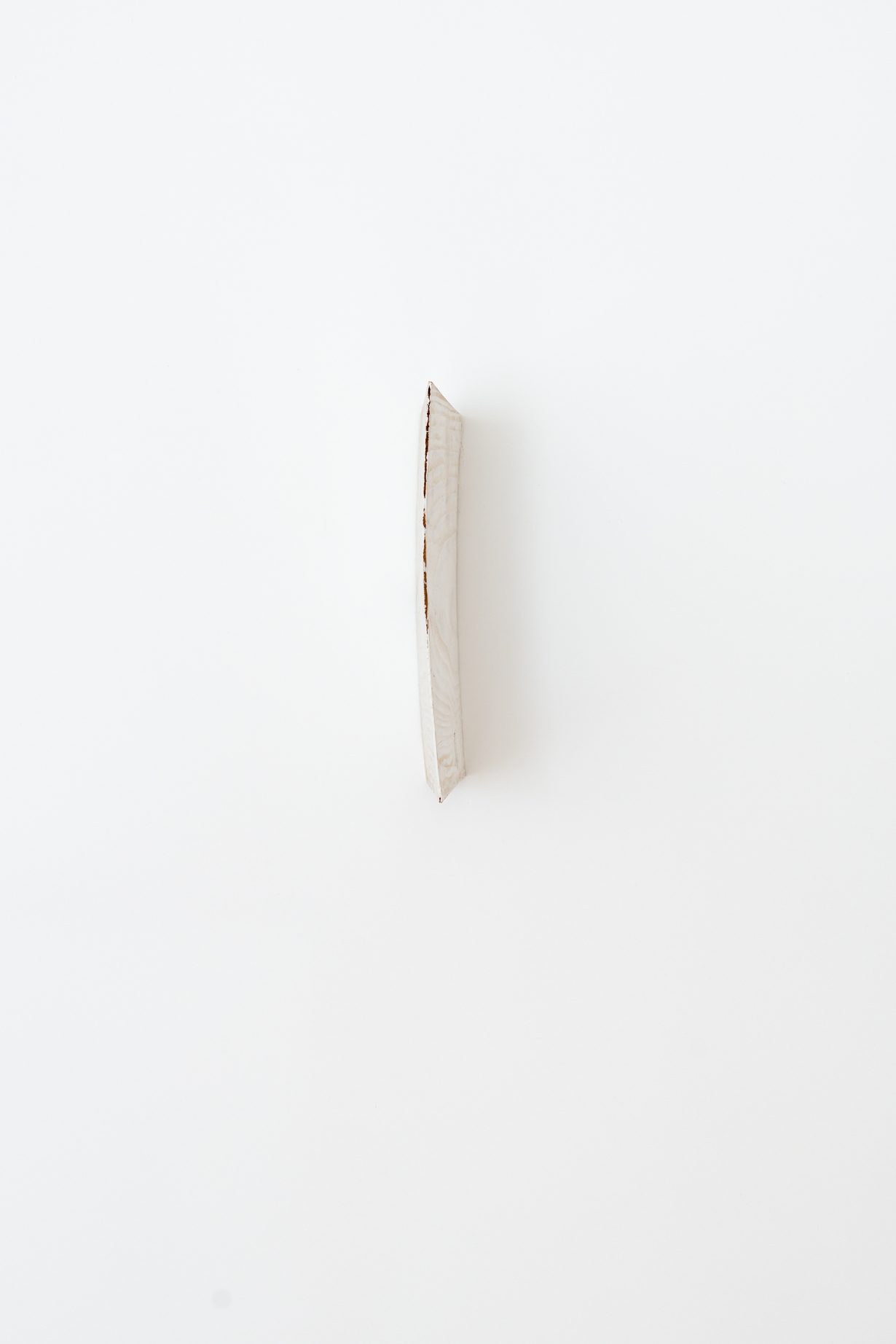
Fernanda Gomes
Galeria Luisa Strina, São Paulo, through 20 July
What is an exhibition? This is the question Brazilian artist Fernanda Gomes asks herself every time she is invited to make one (it’s a question that ArtReview also asks itself when faced with one). The baldest answer is that an exhibition is stuff in a room, and Gomes is an artist who has similarly been stripping art back to its purest form for three decades now, her sculpture often featuring found objects, or material barely indistinguishable from its raw form, her palette rarely extending beyond the palest shades. The art is found in the small relationships she makes within the arrangements: a piece of wood picking up the curve of a dangled thread, cream paint bringing white paint to the fore, a shadow highlighting the changing light across a surface. An interesting screw, placed somewhere unexpected; a matchbox with all its livery scratched off. In these gentlest of gestures, in a process that the artist says (in the press release) subsumes her and all her ‘basic vital processes such as eating, sleeping, movement, consumption of substances or abstinence thereof’, Gomes arrives at an intoxicating total vision. Oliver Basciano

Lines – Aligning your consciousness with the flow
21st Century Museum of Contemporary Art, Kanazawa, 22 June–14 October
During the 1970s, through to the mid-1980s, there was an Italian TV animation titled La Linea. It followed the ‘adventures’ of Mr Linea, whose presence emerged, in outline, from a single, seemingly infinite line drawn across the screen. The obstacles that blocked his ‘progress’ emerged in the same way; sometimes the line would suddenly stop altogether, causing Mr Linea to complain to the cartoonist (Osvaldo Cavandoli) about his lamentable (and dangerous) failure to connect everything together. After all, a line has the potential to go anywhere. On the face of it, you would think that Lines – Aligning your consciousness with the flow, which takes such a fundamental element of art as its core theme, might have a similar issue: it could cover anything. Instead, it focuses on 15 artists, ranging from El Anatsui and Marguerite Humeau to Mark Manders and Nami Yokoyama, and argues that the line, as a form, is much more complex and malleable than it looks or than we might think: it functions as the basis of both art and life. Consequently, the works on display trace the role of rules, bars, strokes, stripes and slashes in the fields of language, ecology and nature, as well as their presence in issues of simplicity, complexity, fluidity and… well… art history itself. As a form that has the potential to act as a connector, lines can establish agency within a network of things. Consequently, through its handling of one of the basic components of art, the show also tackles what is perhaps one of the basic requirements of exhibition-making: demonstrating that art is both relevant and important. Even if the truth may be otherwise in practice. Nirmala Devi
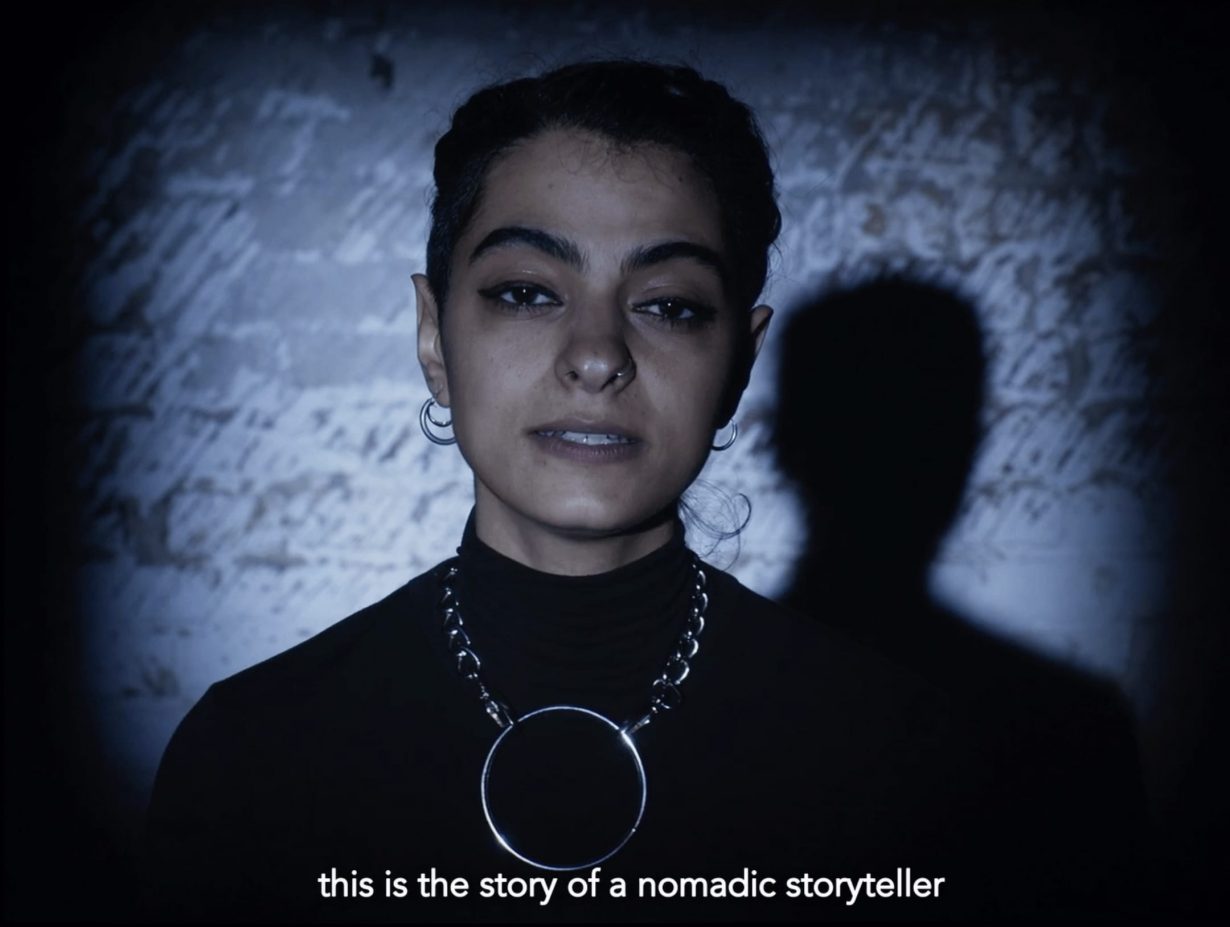
What if Women Ruled the World
EMΣT, Athens, 13 June–
The vast halls of EMST in the heart of Athens will be once more populated entirely by female artists this June, in a historic first for the museum, as they set out to highlight the gender gap in the visual arts. It is a move reflective of a wider trend in museums around the world, which are increasingly recognising the vast disparity in representation within their collections. Tate Britain’s major rehang last year saw a dramatic increase in female representation, with women making up half of the contemporary artists on display; by way of comparison, in 2017 Tate reported that just 27 percent of the living contemporary artists in their collection were female. Exhibition programmes focused specifically on women artists as their sole theme can come off as trite or even reductive. Yet the continued poor figures when it comes to diversity demonstrate that broad brushstrokes like these are needed if the balance is to be redressed. And so to the latest and final iteration of EMST’s exhibition cycle (initiated in December 2023), which is gamely titled What If Women Ruled the World?. New solo exhibitions by Bouchra Khalili and Tala Madani headline June’s programme, with the latter presenting new work demonstrating her characteristically playful, painfully tender, and at times deeply funny worldview (‘Shit Mom’, a series of paintings suggestively rendered in brown paint, anyone?). Alongside the museum’s own major rehang, there are also new presentations of work by American documentary photographer Susan Meiselas and a monumental installation by the late Phyllida Barlow. Louise Benson
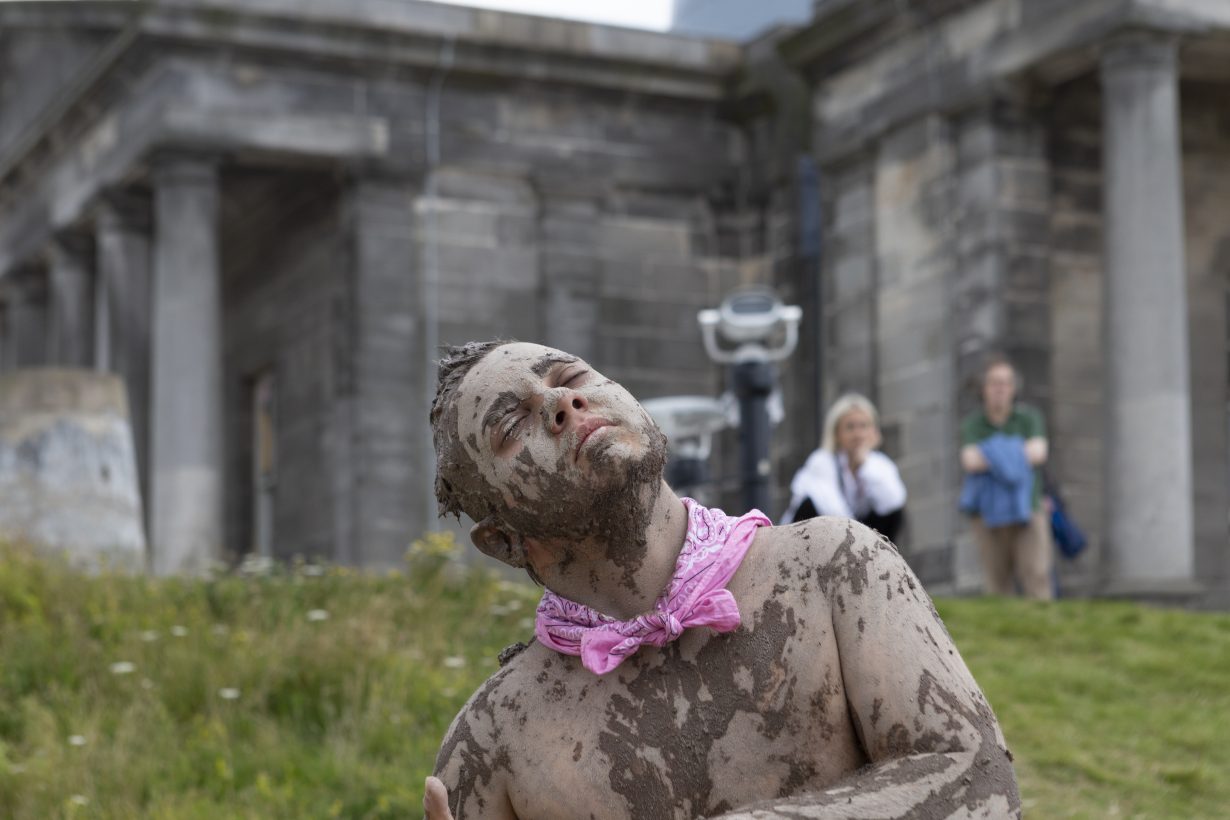
Glasgow International 2024
Various venues, Glasgow, 7–23 June
After some COVID-19 related hiccups, Glasgow International’s back. There seem to be a lot of flora and fauna included in the promotional material, but that’s not actually the theme of the exhibition. Well, maybe it is – metaphorically. There’s lots of talk about growing, nurturing and ecologies. The works presented here then run the full gamut of media and geography to encourage a considered approach to the interpersonal and our environs. Take the performance Corpores Infames: Disreputable Bodies (2024) in which the artists Rabindranath X Bhose, Belladonna Paloma and Oren Shoesmith undertake a solstice ritual for the Glaswegian boglands. A commissioned audiowork as a point of departure by Ajabu Ajabu collective members Darragh Amelia and Alma Simba explores how sonic matter can facilitate discussions about ‘intimate friendship and human connection through fluid materiality, landscape, and the notion of home’. What Glasgow International seems to be saying, then, is that we should really cultivate one another. And the earth. Marv Recinto

Avant Garde and Liberation: Contemporary Art and Decolonial Modernism
MUMOK, Vienna, 7 June–22 September
Featuring work by 24 artists from South Asia, Africa, Europe and America, mumok’s summer show promises to ‘highlight the significance of global modernism for contemporary art …and raises questions of the political circumstances that move contemporary artists to resort to those non-European avant-gardes’ There’s something typically perverse (fucked-up might be a truer description) about defining a show that supposedly leans into and draws upon decolonialism and resistance to dominant Western narratives in art with the quintessentially European term ‘avant-garde’. I say ‘typically’, because art’s institutions seem to be making a habit of performing what they pretend to critique (see this year’s Venice Biennale). Perhaps it’s just the product of a lack of imagination. There should, however, be plenty of that (imagination, not the lack of it) in the work by artists such as Yto Barrada, Mohammed Bourouissa, Atul Dodiya, Vivan Sundaram, to name just a few. The general idea is that the art on show might suggest ways of resisting the general clampdowns on social and civil liberties today. Given the framing of the show (which also highlights art’s engagement with old and contemporary freedom fights), you’ll also get a chance to judge for yourself as to whether or not museums are the space in which liberation movements go to die. Just like artworks. Sous les pavés encores des pavés. Nirmala Devi
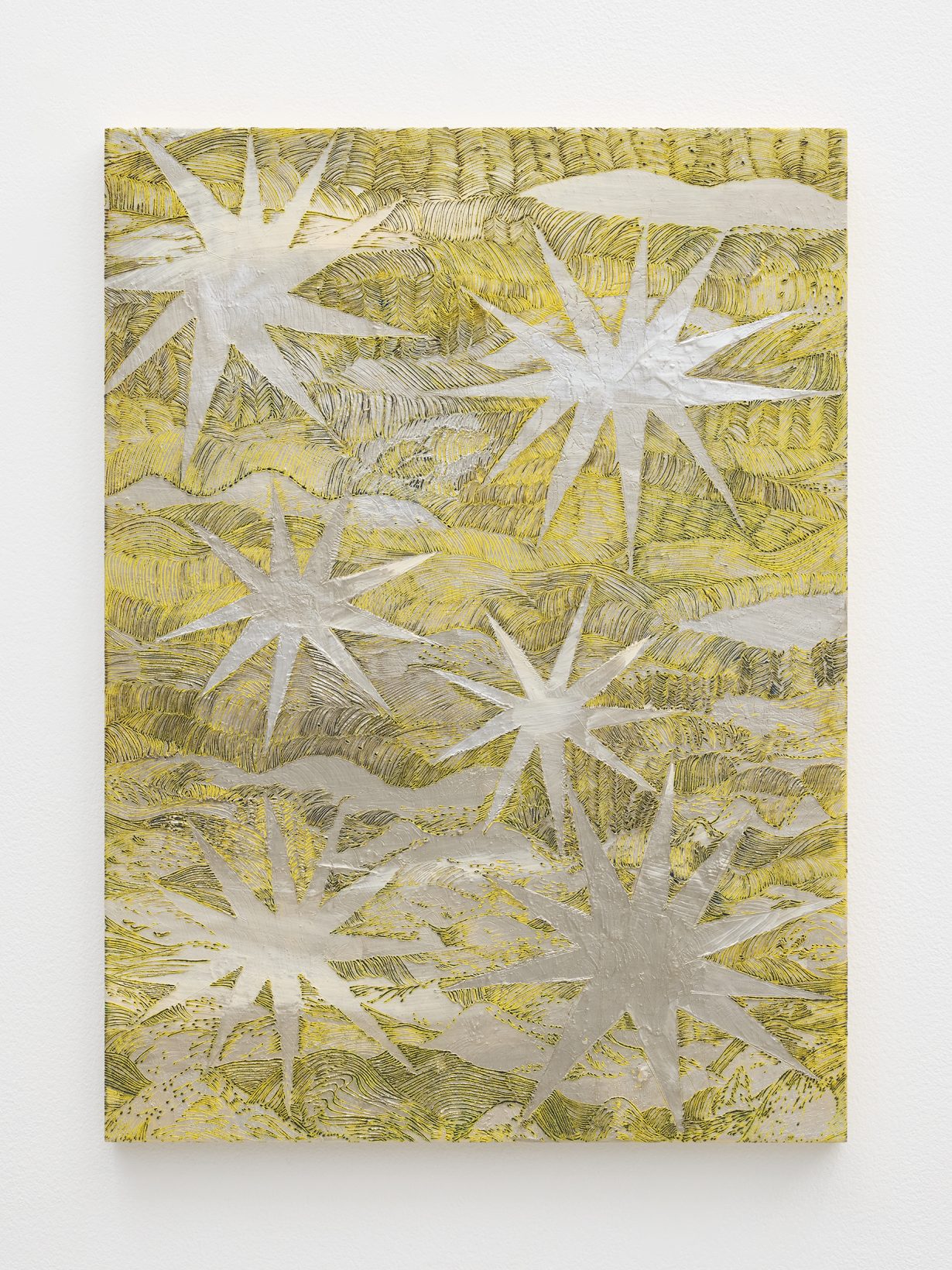
Nana Funo: Born for This
Tomio Koyama, Tokyo, 9–29 June
Maidens meet beasts and beasts eat maidens in the acrylic paintings and charcoal drawings of Nana Funo. At times, in these delicate compositions, the maiden is even the beast itself. Drawing her subject matter from fairytales she was told during childhood, as well as from her own imagination, her previous, mostly monochrome works (in sepia and hues of grey) combine muted colour palettes and highly detailed, etchinglike figuration. From afar, depictions of flora and fauna appear to have been scratched into the surface of each painting. Funo, in fact, applies a delicate impasto to her canvases that gives the works a sculptural quality. Emerging from richly patterned backdrops are crystals, female figures, pinecones, dandelions, wolves, moths, birds and mushrooms, appearing like oneiric images that can’t quite be pieced together. New works shown here, in a solo exhibition titled Born for This, offer brighter colours and a stronger focus on geometries, including Stars I Saw in Kawanehoncho (2024) – an acrylic painting that features silver stars bursting against a yellow field. Fi Churchman

Gonçalves Rodeo Fest
Gonçalves, Brazil, 20–23 June
There are bigger rodeos in Brazil: in August the city of Barretos holds its annual Festa do Peão in an Oscar Niemeyer-designed stadium with, this year, US country star Cody Johnson, headlining the music programme. But visitors to Gonçalves, high up in the Mantiqueira Mountains of Minas Gerais, are rewarded with a more intimate experience: this is where you come if you want to feel the sweat flecking off the faces of the bull riders as they battle to stay on the astonishingly large cattle the longest. The smaller the festival, the more acute the drama. The DJ plays a hyper energetic mix of music, each track never really being allowed to last for more than 30 seconds, as an MC whips up the crowd. Then, with the clang-clang-clang signal, the stable locks have been pushed open and the bull and its rider are about to enter the sawdust pit. What happens next is down to the rodeo gods and a strong pair of thighs. This will be the final of a long-running roadshow that has pitched up across the state of Minas Gerais, with dancing in the mud to a lineup of sertaneja acts promised once the rodeo kings and queens have been crowned. Oliver Basciano